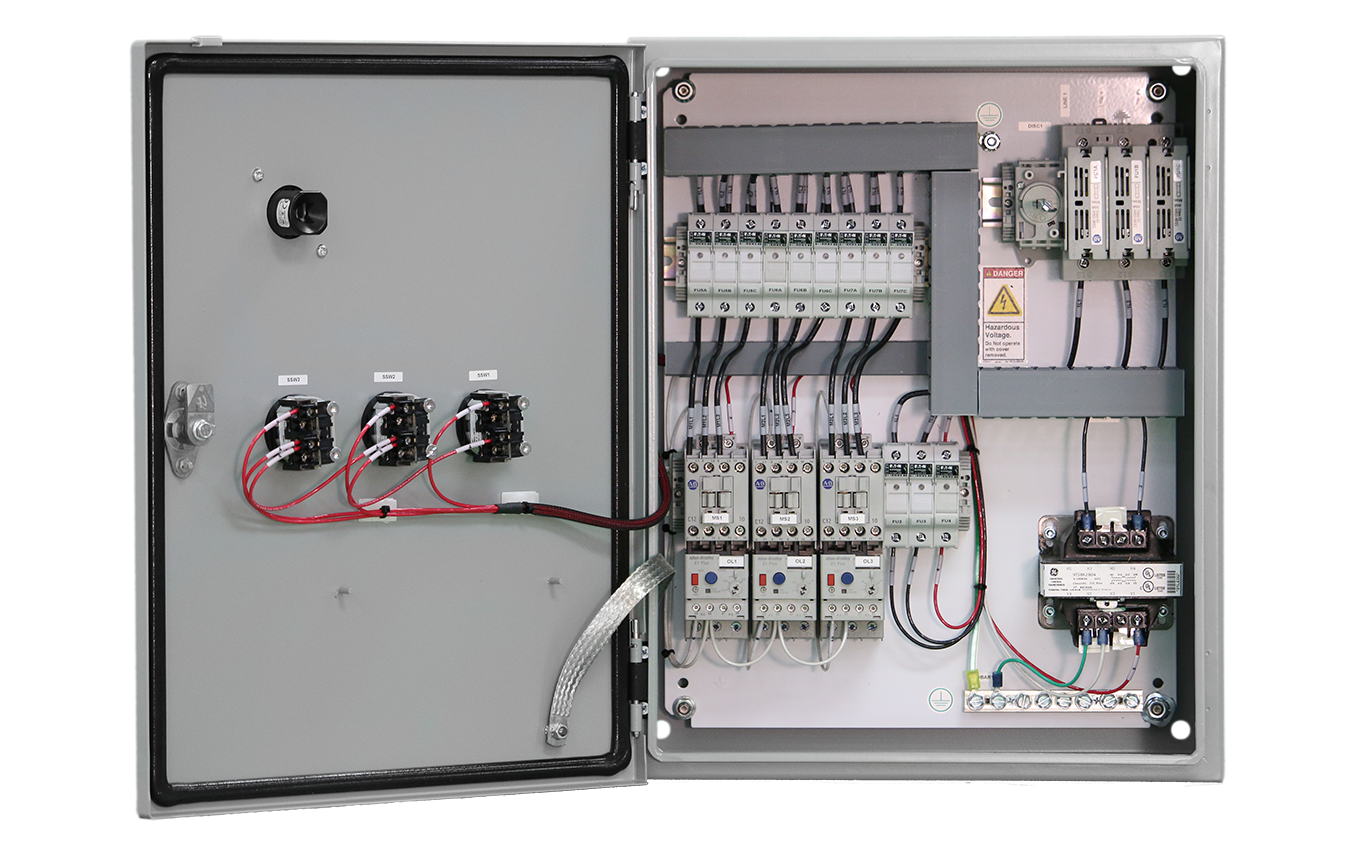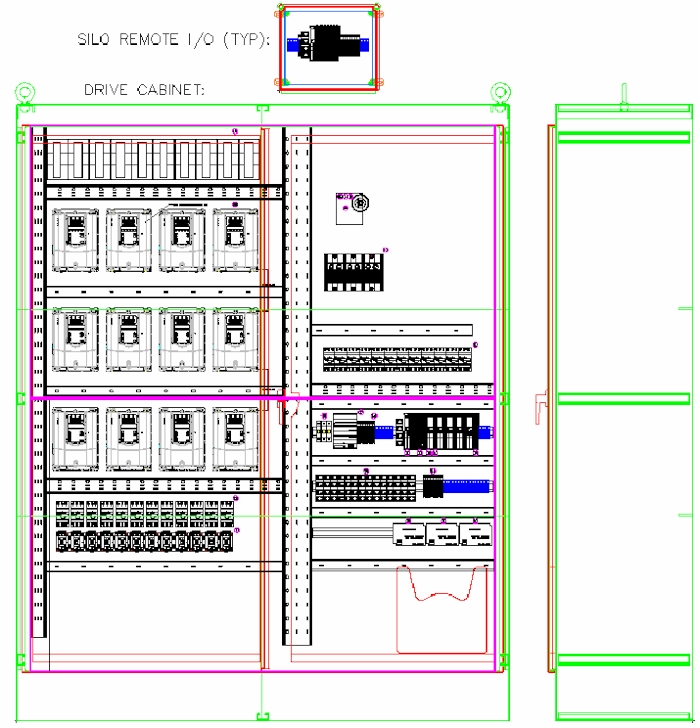Table Of Content

In those years, components are bound to fail, and the available replacement part might be smaller or come with a shorter wire. If you have to slide a few existing components 2” away from the connection, it’s much trickier when your wire is cut to exact length. This prevents the current from leaking between lines and becoming a shock hazard.
Component Types and Wire Sizes
A variety of design considerations must be weighed throughout the design process in order to design a control panel that meets functional requirements, application specifications, and regulatory standards. The following design decisions represent the primary design considerations in developing an industrial control panel, although additional considerations specific to individual applications may apply. It is imperative that the control panel design allows for the possibility of future upgrades and expandability. This means considering the need to add electrical components, human-machine interface components, and power distribution components to keep up with system changes. Designers should build systems with the flexibility to ensure they won’t be stuck without options should they need extra power or more capacity down the road.
Power Supply and Distribution Requirements
These components include motor controllers, fused disconnect switches, circuit breakers, timers, selector switches, etc. The most advanced tests will go beyond these basics to exercise PLC program functionality and demonstrate communications to VFDs, HMIs and other intelligent devices. This type of testing is more practical for control panels installed on OEM equipment, but many tests can be performed on control panels destined for stick-built installation. Always start with simple operator devices (Pushbuttons, Pilot Lights, Digital Panel Meters, etc.). When simple does’t get the job done, use a color touch screen display as the Human Machine Interface (HMI).
Make Your Schematic Count
Lay out terminal strips so that there are separate wire ducts for the internal and field wiring. This simplifies the field wiring and also helps if you have to disconnect the wiring when shipping the machine. You must understand the environment where the equipment will be located. NFPA 79 guidelines will ensure worker safety and the machine will perform without any electrical hazards. Overall, the components and wires should allow the maximum possible load that can occur. And remember to include a proper grounding technique to safeguard the system from power surges and other electrical faults.
After the control panel components are identified and located, creating the electrical schematics is a critical step in the development process. Electrical schematics provide an organized plan for connecting the components and ensuring the system's proper functionality. Every detail must be considered, from the selection of materials to resistances and wiring pathways. These can be carefully planned out with great precision to guarantee that all circuits run properly when the control panel is complete.
Electrical Safety & Compliance
Below is an overview of the most prominent regulations applicable to the design, manufacture, and installation of industrial control panels. Because of the changing nature of regulatory standards, it’s important to stay up-to-date on current requirements. Industrial control panel design is a complex process that involves carefully selecting components, carefully considering design requirements, and thorough testing to ensure that the control panel is safe and effective. The design process involves defining the system requirements, choosing the components, creating the electrical schematics, building and testing the control panel, and documenting the design.
The Basics Of Industrial Control Panel Design

Undersized components will introduce unnecessary resistance in the electrical pathways, resulting in thermal issues, overloading, and sudden shutdowns. So it should be consistent and reliable to keep the electrical components operating at the correct voltage. Also, the control panel components must operate within the ideal temperature range to avoid failure.
HMI (Human-Machine Interface) Components
It's a good idea to use a minimum of a NEMA 12 enclosure to protect from water ingress from drips or splashes. Don't buy a cheap control enclosure, or your dripping mop may short out a power circuit in the control panel. Control panel design for industrial equipment and machinery is an important undertaking, resulting in an interface designed to control a machine or process. It’s not a simple matter of selecting an appropriate enclosure and a back panel that houses the electrical hardware.
Blackmagic Design releases a DaVinci Resolve editing panel for iPads - The Verge
Blackmagic Design releases a DaVinci Resolve editing panel for iPads.
Posted: Sun, 14 Apr 2024 07:00:00 GMT [source]
Get with the mechanical designer because the functional diagram is a great way to tie the two disciplines, mechanical and electrical, together. At a minimum, draw a top view block diagram and point out I/O details and machine functions. The smallest kA value is used as the kA value for the panel as a whole. The kA value must be greater than the kA value of the incoming source in order for the panel to be installed.
Electrical engineering for industrial control panels - Siemens
Electrical engineering for industrial control panels.
Posted: Thu, 01 Feb 2024 06:13:33 GMT [source]
Industrial control panels are necessary to support the electrical, instrumentation, and control (EIC) aspects of these systems. NFPA 79, a part of NEC (National Electrical Code), focuses on wiring rules for industrial machines. This standard covers electrical and electronic parts of machinery working at or under 600V. It includes various machines like assembly, injection molding, and material handling, plus testing equipment. NFPA 79 makes machinery safer by guarding against fires and electrical risks for operators, equipment, facilities, and ongoing work. With 35 years of experience, the Industrial ControlsCompany maintains the ability to produce control panels that meet the needs ofany market.
To reduce the possibility of electrical noise affecting the control signals, it is best to separate the power and control wiring. Lay out the panel so that the power and control are in separate sections. Group all power fuses, motor starters and variable frequency drives on the same side of the panel as the incoming power (typically the right side, when facing the front of the panel). Then locate all low-voltage control components on the opposite side. Contactors and variable frequency drives will require some control wiring. Consider how you can route the control wires over to the power side while trying to keep them separated.
This design аllоws yоu tо mаke effiсient use оf аvаilаble sрасe. Beyond color correction, the panel offers a range of transport and grading controls conveniently positioned around the edges. With these buttons at your fingertips, you can navigate your project timeline, set stills, and execute other commands with ease, significantly speeding up your workflow. Notably, some of these controls were previously exclusive to the larger DaVinci Resolve Mini and Advanced panels. Think about how field wiring going to the machine will route into the panel. Referring back to our first best practice, consider how best to keep the power and control wiring separated.
So be careful when handling this step to ensure precision on all circuits and efficient running when complete. The back panel layout is another subject, but lay it to scale in the drawing, or it just may not fit. Also, group similar voltage-level devices or functions together. It keeps the potentially noisy hardware, such as variable frequency drives, servo amps, power contactors and relays, away from the low-level signal hardware such as the controller and analog signals. Pull it all together with a bill of materials (BOM) of your favorite vendors’ hardware. The BOM is for the control panel hardware, so keep field devices separate if you can.
No comments:
Post a Comment